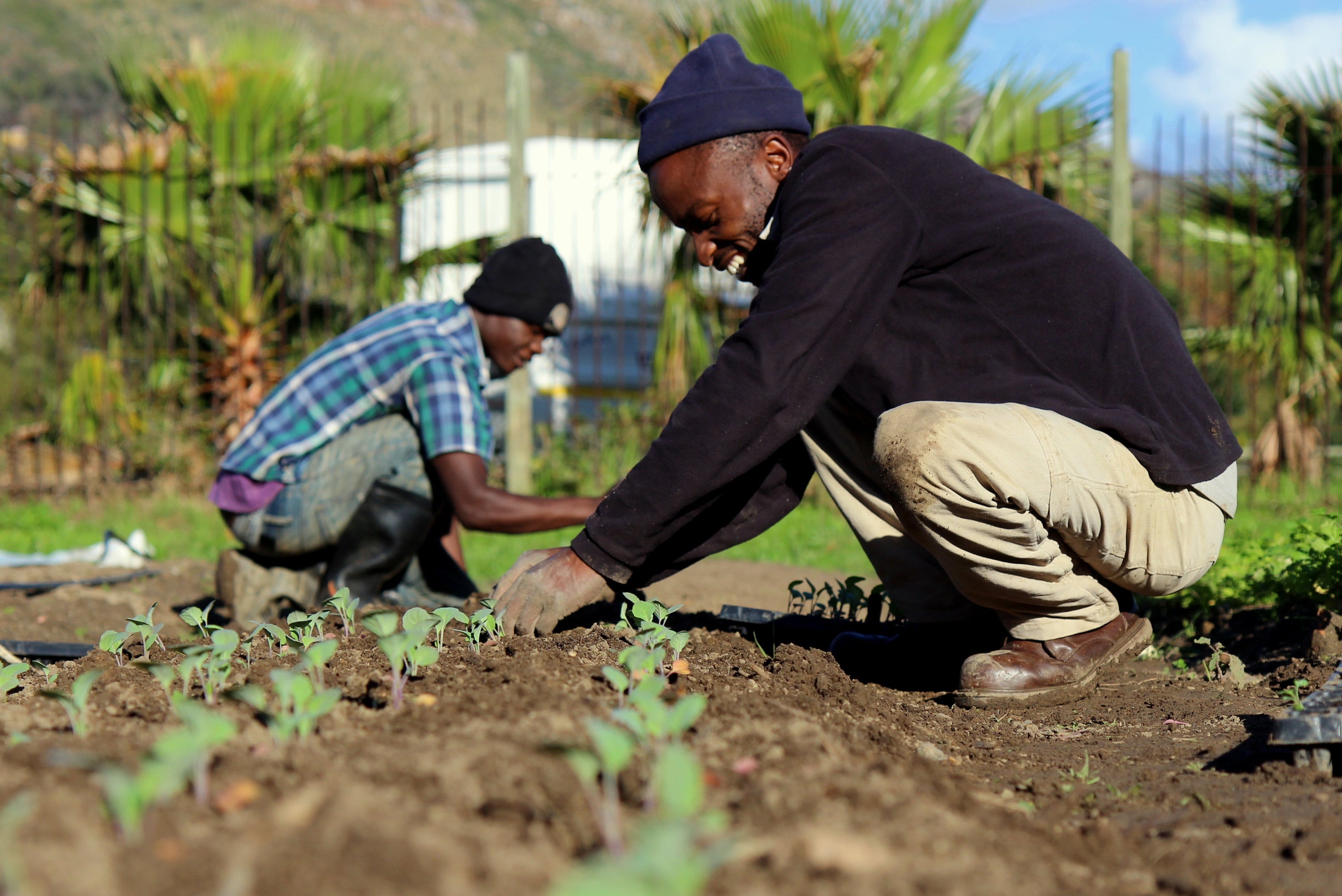55-60 days to harvest :
As winter turns a corner, a gap in the rains open, and the soil starts to dry out; we head out to the fields to take samples of our soil which are sent to the lab for chemical analysis. Based on these results, the results of our compost analysis, and the nutrients projected from our cover crop, our calculations of basic amendments (magnesium, sulfur, etc) are made.
Triangulating the ideal seeding date, gaps in rain that allow for proper soil conditions, and the need to leave a few weeks to allow for decomposition of cover crops; we time the mowing and incorporation of our winter cover. These plants have been in the ground since the previous fall, capturing nutrients that would otherwise leach out, adding nutrients and feeding the microscopic soil world once decomposed. Done too early and we lose some nutrients, done when too wet and we damage the physical soil structure and biological life, done too late and we miss seeding windows.
30- 40 days to harvest :
Adding the pre-calculated amendments and compost, we use a rotary harrow to stir rather than flip the soil, mixing things together while also shaping our beds and minimizing our impact on the life underground. Good soil to seed contact is key in successful germination. A final raking of the beds ensures that sticks, chunks, and other debris that might prevent seeds from nestling into to soil are removed and simultaneously kills off any tiny weeds hoping to make a quick appearance.
Farming with diverse crops means tools that improve efficiency while being relevant for many plants. Luckily, there are a few companies specializing in tools for the small-scale farmer. Using a Jang seeder, we are able to seed meters of beds at a walking pace, saving our backs for later days. In order to maintain a supply of baby sized turnips for several months, our planting plan caters for bi weekly plantings. Thirty plus days (varying based on planting date) from today, we should be seeing the first of our turnips ready for harvest.
Plants are most susceptible to pests when they are small, sick, or stressed. By keeping our soil healthy and planting in season, we reduce the likelihood of sickness and stress. To protect them when they are small, we use a very light floating row cover placed over them from just after seeding. This cover allows water and light through while keeping pests out. In the case of these turnips, the row cover will be left on for their entire time in ground.
15 days to harvest :
With a crop that is in the ground for as short a period as these turnips, at most we will hoe to control weeds once. There are many tasks to get done on a diversified farm and spending time hoeing a plant that is soon to come out of the ground (and easier to weed once it does), doesn’t make much sense. In order to make hoeing as effective as possible, we have some Elliot Coleman designed long handled hoes from Johnny’s Selected Seeds. The driving thought behind these hoes is that every gram of weight saved on the tool, and every angle of improvement, means less effort for each of many thousands of hoe movements a season. Over the course of a lifetime of farming, this makes a huge difference!
Harvest day!
First thing in the morning, while the air is still cool, we do all of our harvests. If the crop has residual heat from the field, it takes longer to cool down in our cold room and doesn’t last as long. Since these turnips are sold at a particular size, we look through the beds for any that are ready, taking them from field to shade as quickly as possible. Any bad leaves are removed to compost and the rest of the turnip, tops and all, are washed either on our root washing table if there are many or by hand in our sink if there are few. Then, as quickly as possible the crop is moved into our cold room ready for delivery in a day or so in our reusable bins (no packaging waste here!).
A few months post first harvest :
Each bed section will be seeded a few times since the turnips ripen relatively quickly. Once the weather heats up and the flavour drops off, these beds (along with others in this crop rotation) will be planted to our summer cover crop mix. This summer cover survives with little water while protecting the soil, generating carbon and nitrogen for future crops, and providing organic food for the soil microbiome.




